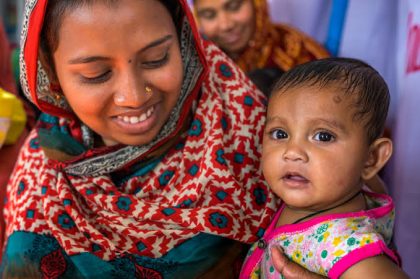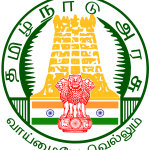
- The first comprehensive estimates of disease burden due to child and maternal malnutrition and the trends of its indicators in every state of India from 1990 to 2017 are published on 18 September 2019, in The Lancet Child & Adolescent Health by the India State-Level Disease Burden Initiative.
Key findings
- The death rate attributable to malnutrition in under-5 children in India has dropped by two-thirds from 1990 to 2017.
- Malnutrition is however still the underlying risk factor for 68% of the deaths in under-five children in India, and is the leading risk factor for disease burden in persons of all ages considered together contributing 17% of the total DALYs (Disability-adjusted life-years).
- The major disease conditions through which malnutrition results in disease burden and death in under-five children in India are neonatal disorders, lower respiratory infections and diarrhoeal diseases.
- The DALY are attributable to malnutrition in children varies 7-fold between the states and is highest in Rajasthan, Uttar Pradesh, Bihar and Assam, followed by Madhya Pradesh, Chhattisgarh, Odisha, Nagaland and Tripura.
- Among the malnutrition indicators, low birth weight is the largest contributor to child deaths in India, followed by child growth failure which includes stunting, underweight and wasting.
- The prevalence of low birth weight was 21% in India in 2017, ranging from 9% in Mizoram to 24% in Uttar Pradesh. The annual rate of reduction was 1.1% in India between 1990 and 2017, ranging from 3.8% in Sikkim to 0.3% in Delhi.
- The prevalence of child stunting was 39% in India in 2017. This ranged from 21% in Goa to 49% in Uttar Pradesh and was generally highest in the Empowered Action Group (EAG) states. The annual rate of reduction was 2.6% in India between 1990 and 2017, which varied from 4% in Kerala to 1.2% in Meghalaya.
- The prevalence of child underweight was 33% in India in 2017, ranging from 16% in Manipur to 42% in Jharkhand. The annual rate of reduction was 3.2% in India between 1990 and 2017, ranging from 5.4% in Meghalaya to 1.8% in Delhi.
- The prevalence of child anaemia was 60% in India in 2017, ranging from 21% in Mizoram to 74% in Haryana. The annual rate of reduction was 1.8% in India between 1990 and 2017, which varied from 8.3% in Mizoram to no significant reduction in Goa.
- The prevalence of anaemia in women was 54% in India in 2017, ranging from 28% in Mizoram to 60% in Delhi. The annual rate of reduction was 0.7% in India between 1990 and 2017, varying from 3.4% in Nagaland to no significant reduction in Himachal Pradesh.
- The prevalence of exclusive breastfeeding was 53% in India in 2017, ranging from 34% in Meghalaya to 74% in Chhattisgarh. The annual rate of increase in India between 1990 and 2017 was 1.2%, ranging from 4% increase in Gao to a slight reduction in Uttar Pradesh.
- The prevalence of child overweight was 12% in India in 2017. It was highest in the more developed states, but it is rapidly increasing in all states of India. This annual rate of increase between 1990 and 2017 was 5% in India, which varied from 7.2% in Madhya Pradesh to 2.5% in Mizoram.
Note:
Targets set by the National Nutrition Mission 2022 and the WHO/UNICEF 2030
Low birth weight : 2 percentage points reduction in prevalence annually from 2017 to 2022
Child stunting : Reduction from 38.4% to 25% by 2022
Child under weight : 2 percentage points reduction in prevalence annually from 2017 to 2022
Anaemia : 3 percentage points reduction in prevalence annually in children under-five and in women 15-49 years of age from 2017 to 2022.
WHO/UNICEF 2030 targets
Low birth weight : 30% reduction in prevalence from 2012 to 2030
Child stunting : 50% reduction in number of children under-five who are stunted from 2012 to 2030
Child wasting : prevalence of less than 3% by 2030
Anaemia : 50% reduction in prevalence in women 15-49 years of age from 2012 to 2030
Breastfeeding : prevalence of exclusive breastfeeding in the first 6 months of at least 70% by 2030
Child overweight : prevalence of less than 3% by 2030
About the India State-Level Disease Burden Initiative
- The India State-Level Disease Burden Initiative is a collaborative effort between the Indian Council of Medical Research (ICMR), Public Health Foundation of India (PHFI), Institute for Health Metrics and Evaluation (IHME), and a number of other key stakeholders in India, including academic experts and institutions, government agencies and other organizations, under the aegis of the Ministry of Health & Family Welfare. About 300 leading scientists and experts representing close to 100 institutions across India are engaged with this collaborative work. The work of this Initiative is overseen by an Advisory Board consisting of eminent policymakers and involves extensive engagement of 16 domain expert groups with the estimation process. The Health Ministry Screening Committee at the Indian Council of Medical Research and the ethics committee of the Public Health Foundation of India approved the work of the India State-Level Disease Burden initiative.
Description of key terms
- Malnutrition : Malnutrition mainly refers to under nutrition in India but also includes the increasing problem of overweight.
- The main indicators of child and maternal malnutrition are :
- Low birth weight : It is defined as birth weight less than 2.5 kg.
- Child stunting : A child is considered stunted if her/his height-for-age is more than two standard deviations below the WHO Child Growth Standards median.
- Child wasting : A child is considered wasted if her/his weight-for-height is more than two standard deviations below the WHO Child Growth Standards median.
- Child underweight : A child is considered underweight if her/his weight-for-age is more than two standard deviations below the WHO Child Growth Standards median.
- Anaemia : Anaemia in children under-five is defined as haemoglobin less than 110 g/L. Anaemia in pregnant and non-pregnant women 15-49 years of age is defined as haemoglobin less than 110 g/L and 120 g/L respectively.
- Exclusive breastfeeding : It is defined as no food or drink (not even water), except breast milk (including milk expressed or from a wet nurse) for the first 6 months of life, but allows the infant to receive ORS, drops and syrups (vitamins, minerals and medicines). This is considered good for the child’s health development.
- Child overweight : Overweight in children is defined as body-mass index above the month wise cut-off for normal weight as reported in the International Obesity Task Force tables.
- Child growth failure : This term includes child stunting, child wasting and child underweight.
- Disability-adjusted life-years (DALYS) : DALYs are the sum of the number of years of life lost due to premature death and a weighted measure of the years lived with disability due to a disease or injury. DALYs for particular diseases are attributed to malnutrition based on the available research evidence.
- Socio-demographic Index (SDI) : A summary measure that identifies where states, countries or other geographic areas fall on the spectrum of socio-demographic development. SDI is a composite measure based on per capita income, average educational attainment and fertility rate, with the index value ranging from 0 to 1.
- Uncertainty interval (UI) : A range of values that is likely to include the correct estimate of risk exposure or health loss from a particular risk or cause. Narrow uncertainty intervals indicate that evidence is strong, while wide uncertainty intervals show that evidence is weak.





